ReservationSearch and reserve rooms
Click here to confirm, change or cancel your reservation
Reservation
- HOTEL RESOL TRINITY SAPPORO
- HOTEL RESOL SAPPORO NAKAJIMAKOUEN
- HOTEL RESOL HAKODATE
- HOTEL RESOL UENO
- HOTEL RESOL IKEBUKURO
- HOTEL RESOL AKIHABARA
- HOTEL RESOL MACHIDA
- HOTEL RESOL YOKOHAMA SAKURAGI-CHO
- HOTEL POSHTEL TOKYO ASAKUSA
- HOTEL RESOL STAY AKIHABARA
- HOTEL TRINITY SHOSAI
- HOTEL RESOL NAGOYA
- HOTEL RESOL GIFU
- HOTEL RESOL TRINITY KANAZAWA
- HOTEL RESOL KYOTO KAWARAMACHI SANJO
- HOTEL RESOL KYOTO SHIJO MUROMACHI
- HOTEL RESOL TRINITY KYOTO
- HOTEL RESOL TRINITY OSAKA
- HOTEL RESOL TRINITY HAKATA
- HOTEL RESOL SASEBO
- HOTEL RESOL TRINITY NAHA
2024.03.01
Enjoy the sights of Sasebo and multicultural cuisine with a spirit of hospitality at Sasebo American Village Diner
NEIGHBORS
- RESOL HOTELS
- HOTEL RESOL SASEBO
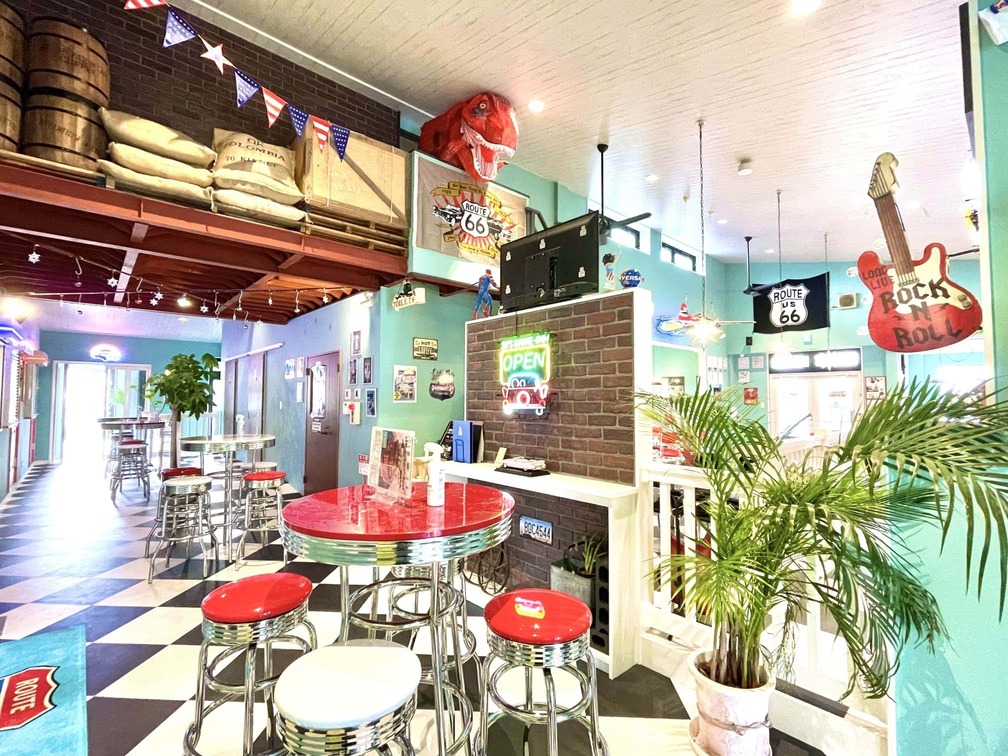
The Kujuku Islands are an archipelago of ria coastlines stretching from Sasebo City to Hirado City. And Sasebo Port flourished as the site of the former naval base. The Kujuku district, which commands a commanding view of both, has a long history and is said to have appeared in a story 500 years ago.
As we crossed the mountain pass, with the impressive shipyards to one side, we came across Funakoshi-cho, one of the tranquil port towns of Tsukumo District, which is home to a US Navy facility. There we found the retro American building, Sasebo American Village Diner.
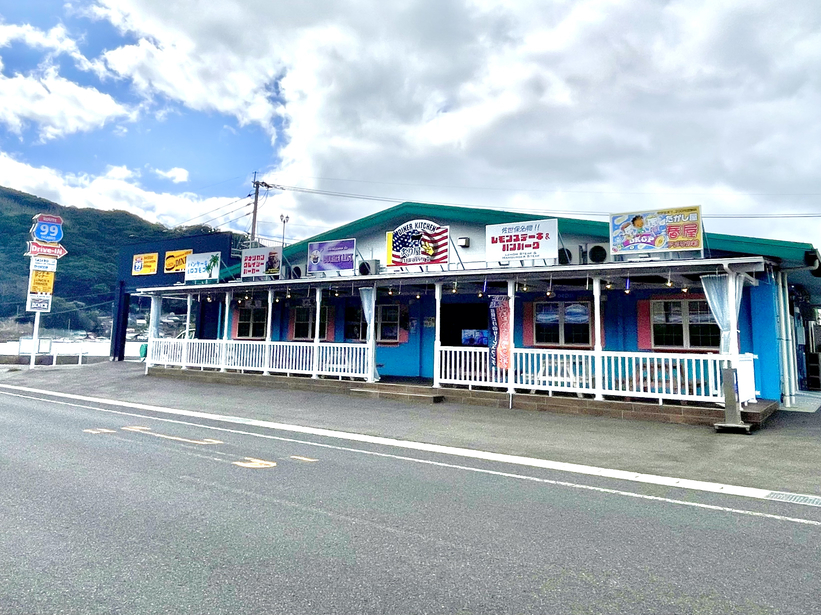
Aiming to be a beloved diner
"This place was originally a nursing home. I thought that in order to create an American town, we needed a diner, like what we call a taishokan in Japan."
"The owner, Shigehiko Sasaki, who runs a US military housing business, says that he often visits Okinawa and came up with the idea to take advantage of the location, which is adjacent to a US military base and housing.
In Sasebo, there are many restaurants where you can experience different cultures, such as menus in English and payment in dollars. Mr. Sasaki says that what he felt through the different culture of Sasebo was that "it took courage to enter the restaurant." Therefore, the concept for Japanese people is a place where grandfathers can come and have fun even if they bring their grandchildren.
"I hope that people of all ages and genders will enjoy and love it, and that they will also enjoy interacting with the American people."
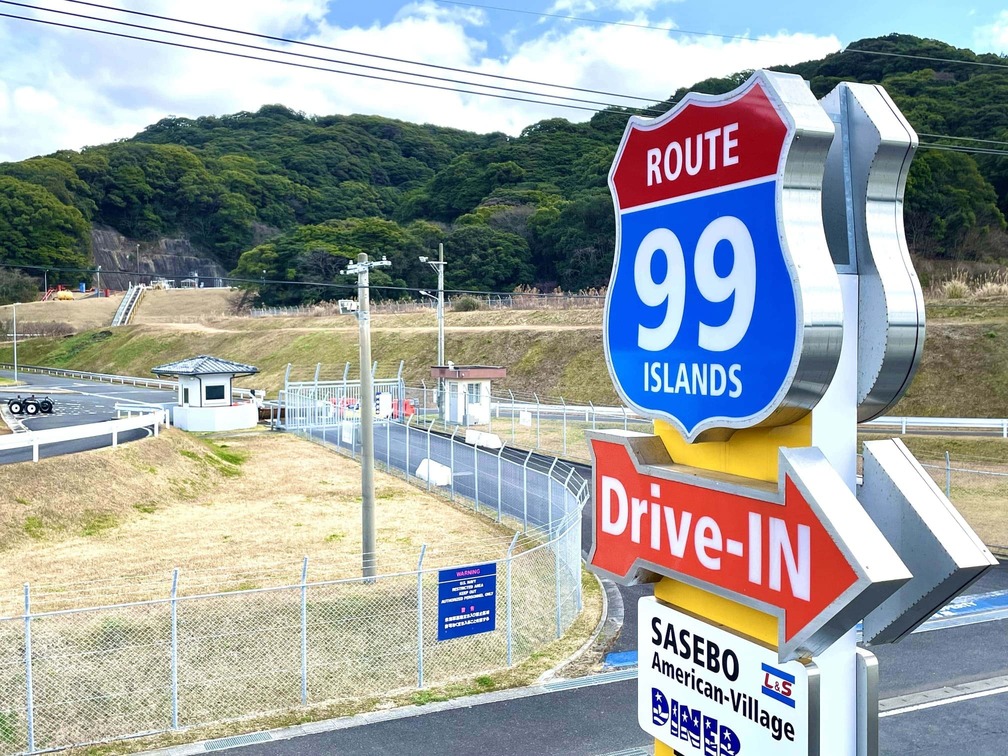 The US Route 66 has been arranged to be Route 99 on Kujukushima Island. There are US military facilities on both sides of the national highway.
The US Route 66 has been arranged to be Route 99 on Kujukushima Island. There are US military facilities on both sides of the national highway.
If you go along National Route 149, which is adjacent to the shop, you will come to a tourist spot where you can see the Kujukushima Islands and Sasebo Port. Mr. Sasaki tells customers who visit there, "If you've come all the way to Sasebo, I want you to enjoy it as much as possible."
The entire in-store experience is hospitality
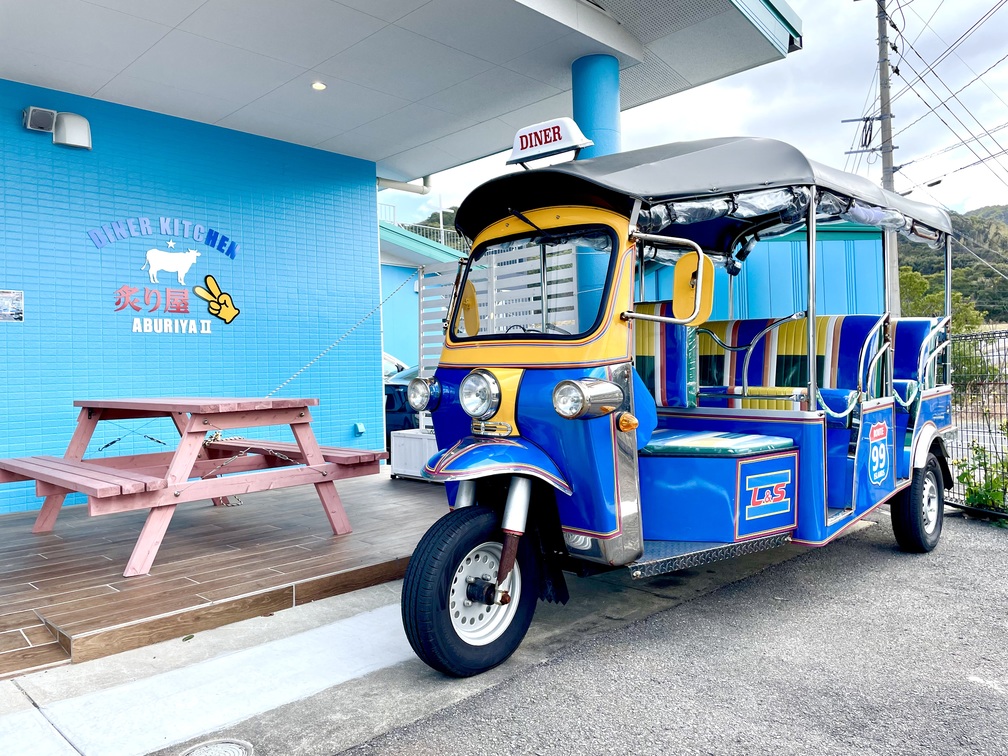 At the entrance to the parking lot, a tuk-tuk, a popular Thai vehicle, stands out.
At the entrance to the parking lot, a tuk-tuk, a popular Thai vehicle, stands out.
"The number of parking spaces is not commensurate with the number of customers. So we purchased a piece of land three minutes' walk away and used it as a second parking lot. However, it is difficult for the elderly and children, so we purchased the land so that we can pick them up and drop them off at the parking lot."
In response to the large number of tourists who use the restaurant, Sasaki-san says, "For the people who have come to eat here, I'd like to take them to a place where they can get a panoramic view of the Kujukushima Islands." On days when there are staff members who can drive, they also provide sightseeing tours in tuk-tuks, but only for those who have eaten here.
"We can't make the main meat dish cheap no matter what, but we wanted to create a restaurant that offers good value for money."
While they are particular about their products, they also have an unwavering desire to make their customers satisfied through their experience. Even though they are a restaurant, they also respond to customer requests such as wedding and maternity photos. Sasaki-san has even prepared a hand-made cross himself.
The spirit of hospitality is apparent throughout the restaurant, including a playful hidden door that opens to reveal a private room with sofa seating.
"We want guests with children to feel comfortable," so not only are there children's plates, but picture books and blankets are also provided. The sofas in the private rooms are perfect for children to take a nap.
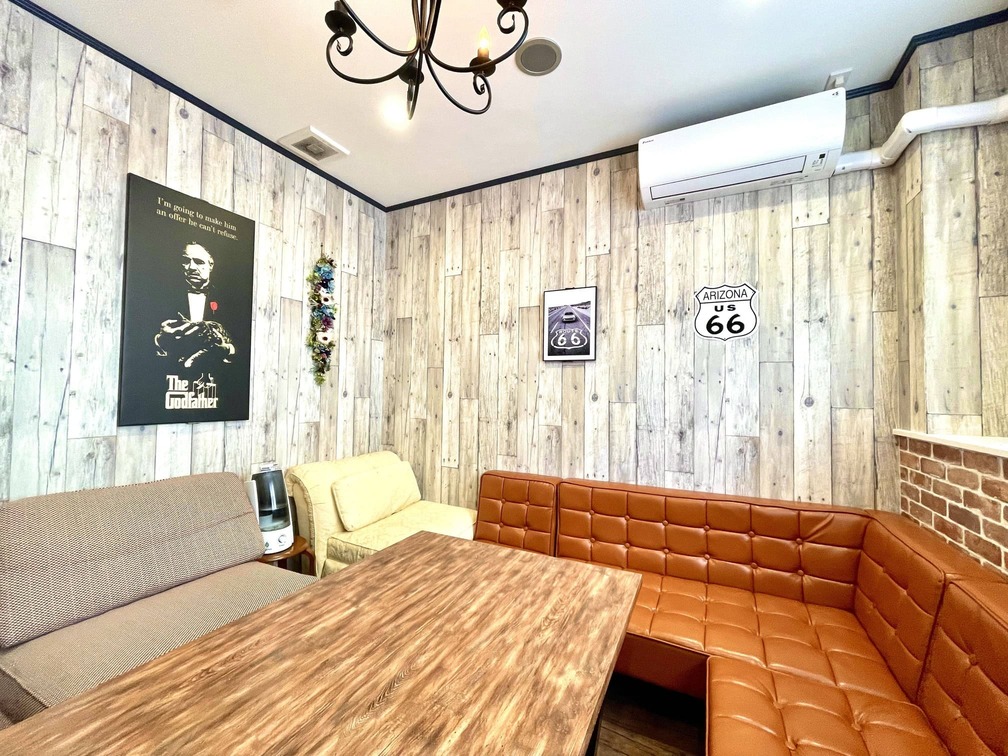 The clue is the white door inside the store. Advance reservations are recommended.
The clue is the white door inside the store. Advance reservations are recommended.
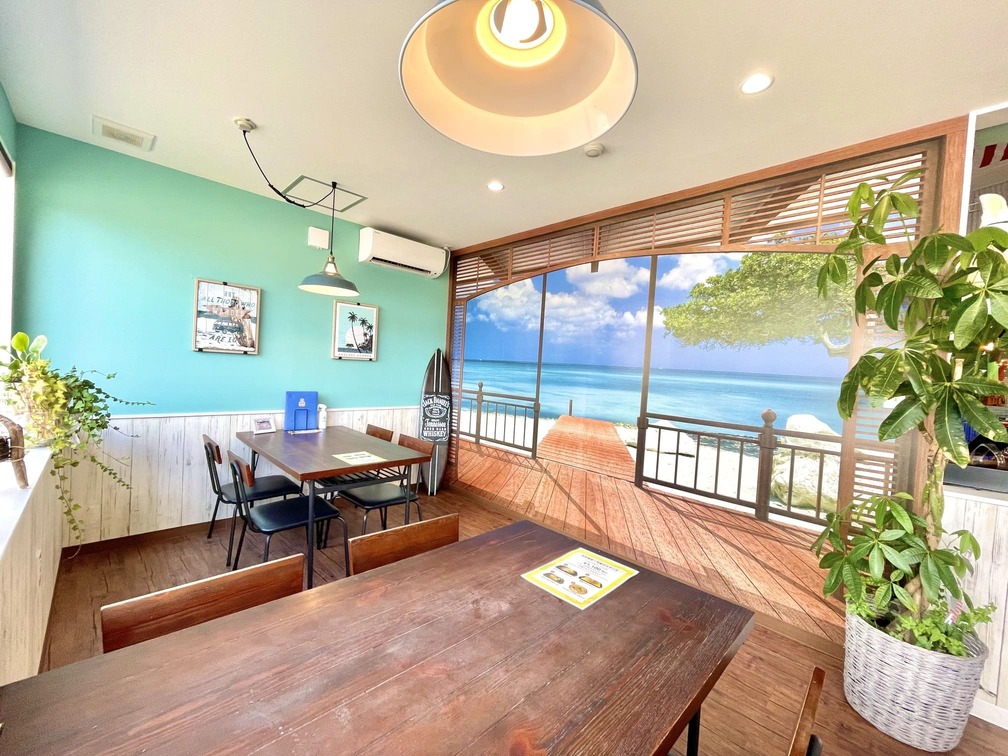 Three areas: Hollywood, New York, and Hawaii (pictured is the Hawaii room)
Three areas: Hollywood, New York, and Hawaii (pictured is the Hawaii room)
Regional exchange born from cross-cultural cuisine
"When I serve foreigners, I end up using apps. Sometimes I get by with gestures. It was hard at first, but now I'm kind of used to it... (laughs)."
So says staff member Hitomi Shimoo, who originally worked at Aburiya, the restaurant that oversaw the creation of the dish, but then moved to Sasebo American Village Diner where she now serves customers.
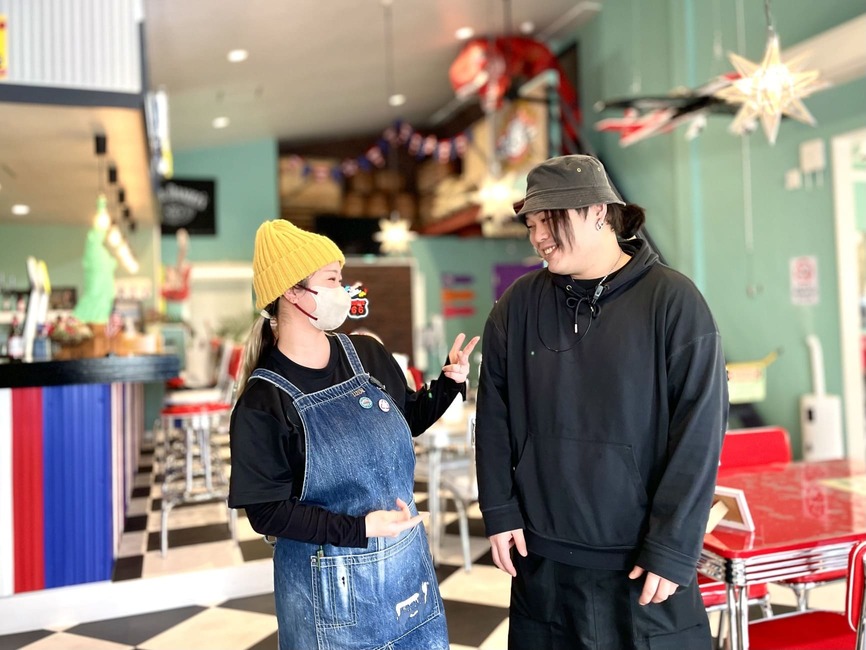 The friendly pair brighten up the atmosphere of the shop. Left: Shimoo-san Right: Maeda-san
The friendly pair brighten up the atmosphere of the shop. Left: Shimoo-san Right: Maeda-san
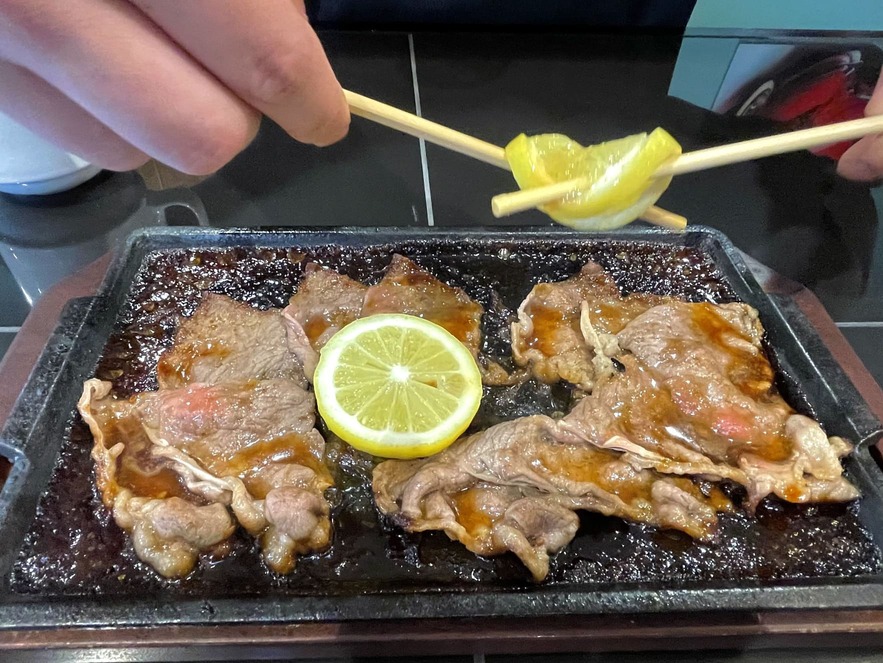 The food served here is supervised by the Yaki-shabu Specialty Restaurant Aburi-ya in Shimogyo-machi, Sasebo City. The thick lemon steak is delicious.
The food served here is supervised by the Yaki-shabu Specialty Restaurant Aburi-ya in Shimogyo-machi, Sasebo City. The thick lemon steak is delicious.
After the war, the establishment of a US Navy base in Sasebo led to the early development of steak culture, and lemon steak was invented to suit Japanese tastes.
The manager, Reio Maeda, will teach us how to eat Sasebo's soul food, lemon steak. "While the meat is still warm, put the lemon on your chopsticks and squeeze it! When you're done, dunk the rice in it."
By adding the rice to the hot plate at the end, you can enjoy the soy sauce-based sauce until the very end.
Asked about the customers he serves daily, Manager Maeda says, "Most of them are open-minded, so it's fun." His bright personality makes first-time visitors feel at ease and at ease.
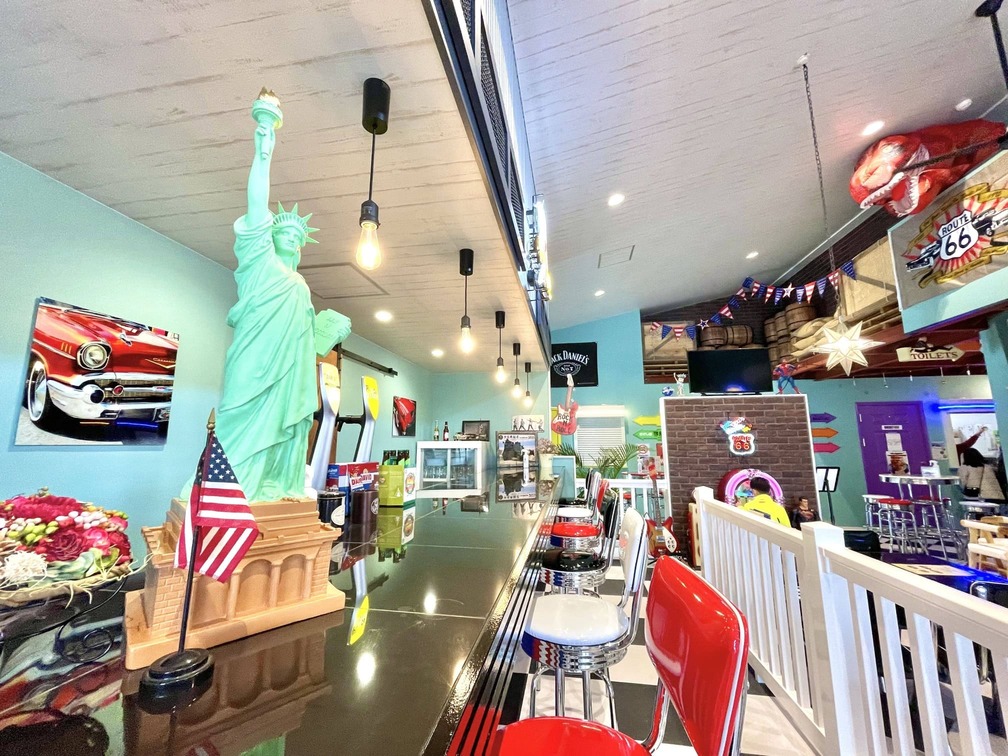 The interior is photogenic no matter where you look. One of the attractions is that you are free to take photos inside the restaurant, based on Sasaki-san's hospitality.
The interior is photogenic no matter where you look. One of the attractions is that you are free to take photos inside the restaurant, based on Sasaki-san's hospitality.
Sasebo American Village Diner offers uncompromising, high-quality products along with a cross-cultural experience that even first-time visitors can enjoy. It is a place filled with hospitality and the essence of Sasebo.
Sasebo American Village Diner

電話:070-2230-9570
Address: 1624-1 Funakoshicho, Sasebo City
Access: 3 minutes walk from the "Urasaki" bus stop on the Seihi bus
SNS: https://www.instagram.com/sasebolands39/?hl=ja
*For details on business hours and holidays, please check the link above.

